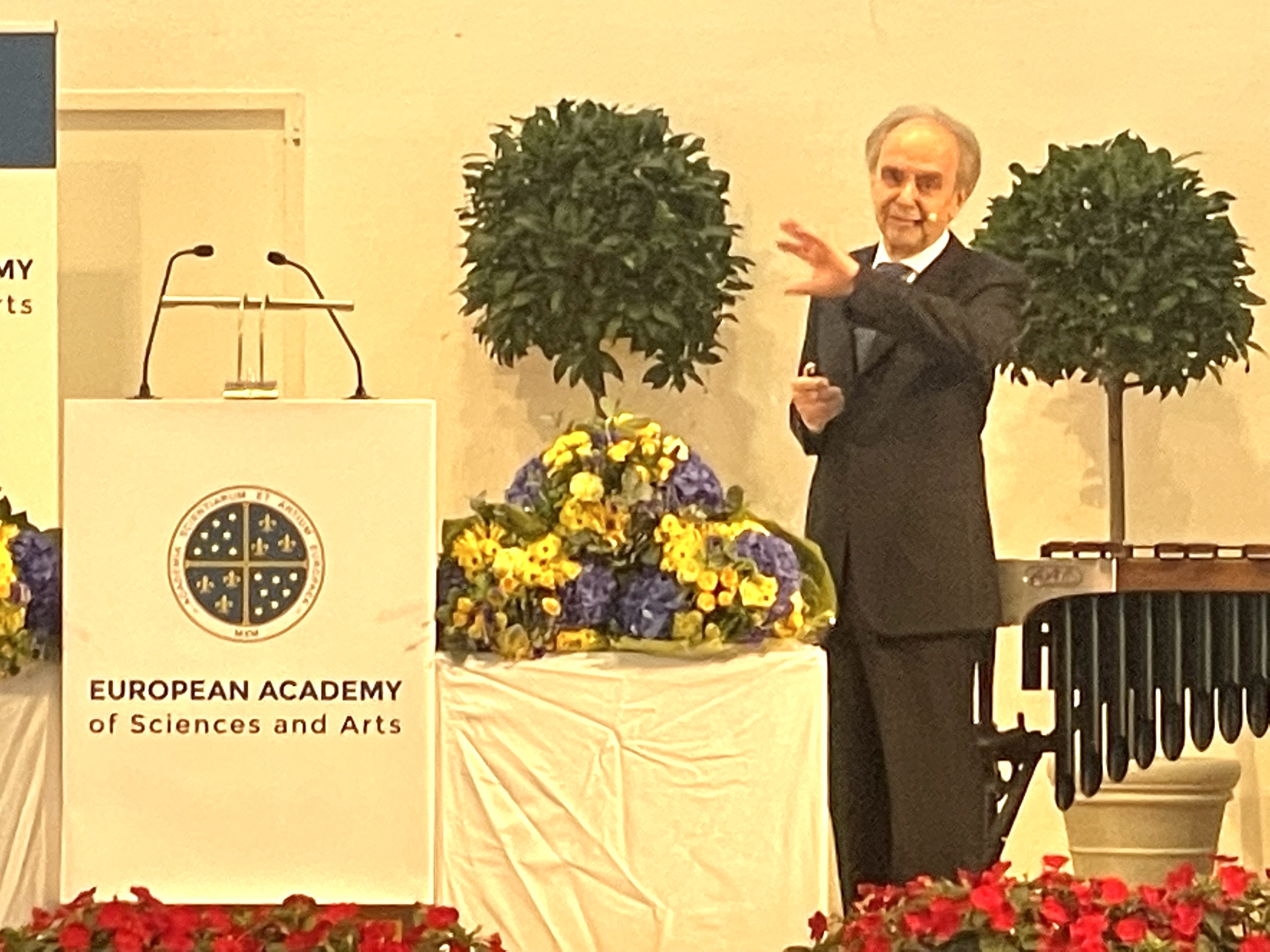|
Axel Meyer
Axel Meyer (born 4 August 1960) is a German evolutionary biologist and a professor of zoology and evolutionary biology at the University of Konstanz, Germany. Meyer is best known for his work on the evolution and adaptive radiation of African cichlid fishes, fish-specific genome duplications, molecular phylogenetics of vertebrates, and the role of ecological and sexual selection in speciation. Education and previous employment Meyer attended the gymnasium (high school) Katharineum in Lübeck. He was an undergraduate at the Universität Marburg (1979–1982), and completed his undergraduate thesis at the Universität Kiel and the University of Miami (1982). He received both his master's and PhD from the Department of Zoology at the University of California Berkeley in 1984 and 1988 respectively. He spent one year as a visiting student in Harvard University's Department of Organismic and Evolutionary Biology (1986–1987). Meyer was an Alfred P. Sloan Postdoctoral Fellow in ... [...More Info...] [...Related Items...] OR: [Wikipedia] [Google] [Baidu] |
Evolutionary Biology
Evolutionary biology is the subfield of biology that studies the evolutionary processes (natural selection, common descent, speciation) that produced the diversity of life on Earth. It is also defined as the study of the history of life forms on Earth. Evolution is based on the theory that all species are related and they gradually change over time. In a population, the genetic variations affect the physical characteristics i.e. phenotypes of an organism. These changes in the phenotypes will be an advantage to some organisms, which will then be passed onto their offspring. Some examples of evolution in species over many generations are the Peppered Moth and Flightless birds. In the 1930s, the discipline of evolutionary biology emerged through what Julian Huxley called the modern synthesis of understanding, from previously unrelated fields of biological research, such as genetics and ecology, systematics, and paleontology. The importance of studying Evolutionary biology is ... [...More Info...] [...Related Items...] OR: [Wikipedia] [Google] [Baidu] |
Die Zeit
''Die Zeit'' (, "The Time") is a German national weekly newspaper published in Hamburg in Germany. The newspaper is generally considered to be among the German newspapers of record and is known for its long and extensive articles. History The first edition of ''Die Zeit'' was first published in Hamburg on 21 February 1946. The founding publishers were Gerd Bucerius, Lovis H. Lorenz, Richard Tüngel and Ewald Schmidt di Simoni. Another important founder was Marion Gräfin Dönhoff, who joined as an editor in 1946. She became publisher of ''Die Zeit'' from 1972 until her death in 2002, together from 1983 onwards with former German chancellor Helmut Schmidt, later joined by Josef Joffe and former German federal secretary of culture Michael Naumann. The paper's publishing house, Zeitverlag Gerd Bucerius in Hamburg, is owned by the Georg von Holtzbrinck Publishing Group and Dieter von Holtzbrinck Media. The paper is published weekly on Thursdays. As of 2018, ''Die Zeit'' has ... [...More Info...] [...Related Items...] OR: [Wikipedia] [Google] [Baidu] |
Nature (journal)
''Nature'' is a British weekly scientific journal founded and based in London, England. As a multidisciplinary publication, ''Nature'' features peer-reviewed research from a variety of academic disciplines, mainly in science and technology. It has core editorial offices across the United States, continental Europe, and Asia under the international scientific publishing company Springer Nature. ''Nature'' was one of the world's most cited scientific journals by the Science Edition of the 2019 ''Journal Citation Reports'' (with an ascribed impact factor of 42.778), making it one of the world's most-read and most prestigious academic journals. , it claimed an online readership of about three million unique readers per month. Founded in autumn 1869, ''Nature'' was first circulated by Norman Lockyer and Alexander Macmillan as a public forum for scientific innovations. The mid-20th century facilitated an editorial expansion for the journal; ''Nature'' redoubled its efforts in exp ... [...More Info...] [...Related Items...] OR: [Wikipedia] [Google] [Baidu] |
Comparative Genomics
Comparative genomics is a field of biological research in which the genomic features of different organisms are compared. The genomic features may include the DNA sequence, genes, gene order, regulatory sequences, and other genomic structural landmarks. In this branch of genomics, whole or large parts of genomes resulting from genome projects are compared to study basic biological similarities and differences as well as evolutionary relationships between organisms. The major principle of comparative genomics is that common features of two organisms will often be encoded within the DNA that is evolutionarily conserved between them. Therefore, comparative genomic approaches start with making some form of alignment of genome sequences and looking for orthologous sequences (sequences that share a common ancestry) in the aligned genomes and checking to what extent those sequences are conserved. Based on these, genome and molecular evolution are inferred and this may in turn be put in ... [...More Info...] [...Related Items...] OR: [Wikipedia] [Google] [Baidu] |
Molecular Evolution
Molecular evolution is the process of change in the sequence composition of cellular molecules such as DNA, RNA, and proteins across generations. The field of molecular evolution uses principles of evolutionary biology and population genetics to explain patterns in these changes. Major topics in molecular evolution concern the rates and impacts of single nucleotide changes, neutral evolution vs. natural selection, origins of new genes, the genetic nature of complex traits, the genetic basis of speciation, evolution of development, and ways that evolutionary forces influence genomic and phenotypic changes. History The history of molecular evolution starts in the early 20th century with comparative biochemistry, and the use of "fingerprinting" methods such as immune assays, gel electrophoresis and paper chromatography in the 1950s to explore homologous proteins. The field of molecular evolution came into its own in the 1960s and 1970s, following the rise of molecular ... [...More Info...] [...Related Items...] OR: [Wikipedia] [Google] [Baidu] |
H-index
The ''h''-index is an author-level metric that measures both the productivity and citation impact of the publications, initially used for an individual scientist or scholar. The ''h''-index correlates with obvious success indicators such as winning the Nobel Prize, being accepted for research fellowships and holding positions at top universities. The index is based on the set of the scientist's most cited papers and the number of citations that they have received in other publications. The index has more recently been applied to the productivity and impact of a scholarly journal as well as a group of scientists, such as a department or university or country. The index was suggested in 2005 by Jorge E. Hirsch, a physicist at UC San Diego, as a tool for determining theoretical physicists' relative quality and is sometimes called the Hirsch index or Hirsch number. Definition and purpose The ''h''-index is defined as the maximum value of ''h'' such that the given author/journa ... [...More Info...] [...Related Items...] OR: [Wikipedia] [Google] [Baidu] |
American Society Of Naturalists
The American Society of Naturalists was founded in 1883 and is one of the oldest professional societies dedicated to the biological sciences in North America. The purpose of the Society is "to advance and diffuse knowledge of organic evolution and other broad biological principles so as to enhance the conceptual unification of the biological sciences." Founded in Massachusetts with Alpheus Spring Packard Jr. as its first president, it was called the Society of Naturalists of the Eastern United States until 1886. The scientific journal ''The American Naturalist'' is published on behalf of the society, which also holds an annual meeting with a scientific program of symposia and contributed papers and posters. It also confers a number of awards for achievement in evolutionary biology and/or ecology, including the Sewall Wright Award (named in honor of Sewall Wright) for senior researchers making "fundamental contributions ... to the conceptual unification of the biological sciences", ... [...More Info...] [...Related Items...] OR: [Wikipedia] [Google] [Baidu] |
List Of Guggenheim Fellowships Awarded In 1996
List of Guggenheim Fellowships awarded in 1996 See also *References {{Guggenheim Fellowships1996
File:1996 Events Collage.png, From left, clockwise: A Centennial Olympic Park bombing, bomb explodes at Centennial Olympic Park in Atlanta, set off by a radical Anti-abortion violence, anti-abortionist; The center fuel tank explodes on TWA Flight 8 ...
[...More Info...] [...Related Items...] OR: [Wikipedia] [Google] [Baidu] |
Guggenheim Fellowship
Guggenheim Fellowships are grants that have been awarded annually since by the John Simon Guggenheim Memorial Foundation to those "who have demonstrated exceptional capacity for productive scholarship or exceptional creative ability in the arts." Each year, the foundation issues awards in each of two separate competitions: * One open to citizens and permanent residents of the United States and Canada. * The other to citizens and permanent residents of Latin America and the Caribbean. The Latin America and Caribbean competition is currently suspended "while we examine the workings and efficacy of the program. The U.S. and Canadian competition is unaffected by this suspension." The performing arts are excluded, although composers, film directors, and choreographers are eligible. The fellowships are not open to students, only to "advanced professionals in mid-career" such as published authors. The fellows may spend the money as they see fit, as the purpose is to give fellows "b ... [...More Info...] [...Related Items...] OR: [Wikipedia] [Google] [Baidu] |
Berlin-Brandenburgische Akademie Der Wissenschaften
The Berlin-Brandenburg Academy of Sciences and Humanities (german: Berlin-Brandenburgische Akademie der Wissenschaften), abbreviated BBAW, is the official academic society for the natural sciences and humanities for the German states of Berlin and Brandenburg. Housed in three locations in and around Berlin, Germany, the BBAW is the largest non-university humanities research institute in the region.BBAW Introduction retrieved 06-21-2012. The BBAW was constituted in 1992 by formal treaty between the governments of Berlin and Brandenburg on the basis of several older academies, including the historic Prussian Academy of Sciences from 1700 and ... [...More Info...] [...Related Items...] OR: [Wikipedia] [Google] [Baidu] |
European Molecular Biology Organization
The European Molecular Biology Organization (EMBO) is a professional, non-profit organization of more than 1,800 life scientists. Its goal is to promote research in life science and enable international exchange between scientists. It co-funds courses, workshops and conferences, publishes five scientific journals and supports individual scientists. The organization was founded in 1964 and is a founding member of the Initiative for Science in Europe. the Director of EMBO is Fiona Watt, a stem cell researcher, professor at King's College London and a group leader at the European Molecular Biology Laboratory. Conferences and journals EMBO funds or co-funds over 90 meetings involving more than 11,000 participants every year. EMBO publishes five peer-reviewed scientific journals: ''The EMBO Journal'', ''EMBO Reports'', ''Molecular Systems Biology'', ''EMBO Molecular Medicine'', and ''Life Science Alliance'', History The European Molecular Biology Organization (EMBO) was launched ... [...More Info...] [...Related Items...] OR: [Wikipedia] [Google] [Baidu] |
European Academy Of Sciences And Arts
The European Academy of Sciences and Arts (EASA, la, Academia Scientiarum et Artium Europaea) is a transnational and interdisciplinary network, connecting about 2,000 recommended scientists and artists worldwide, including 37 Nobel Prize laureates. The European Academy of Sciences and Arts is a learned society of scientists and artists, founded by Felix Unger. The academy was founded 1990, is situated in Salzburg and has been supported by the city of Vienna, the government of Austria, and the European Commission. The EASA is now headed by President Klaus Mainzer, TUM Emeritus of Excellence at the Technical University of Munich and Senior Professor at the Carl Friedrich von Weizsäcker Center of the University of Tübingen. It is unrelated to and should not be confused with a different, highly controversial, and less well-established academy, the Belgium-based European Academy of Sciences. It is a member of the InterAcademy Partnership. Its activities have included a collabo ... [...More Info...] [...Related Items...] OR: [Wikipedia] [Google] [Baidu] |






